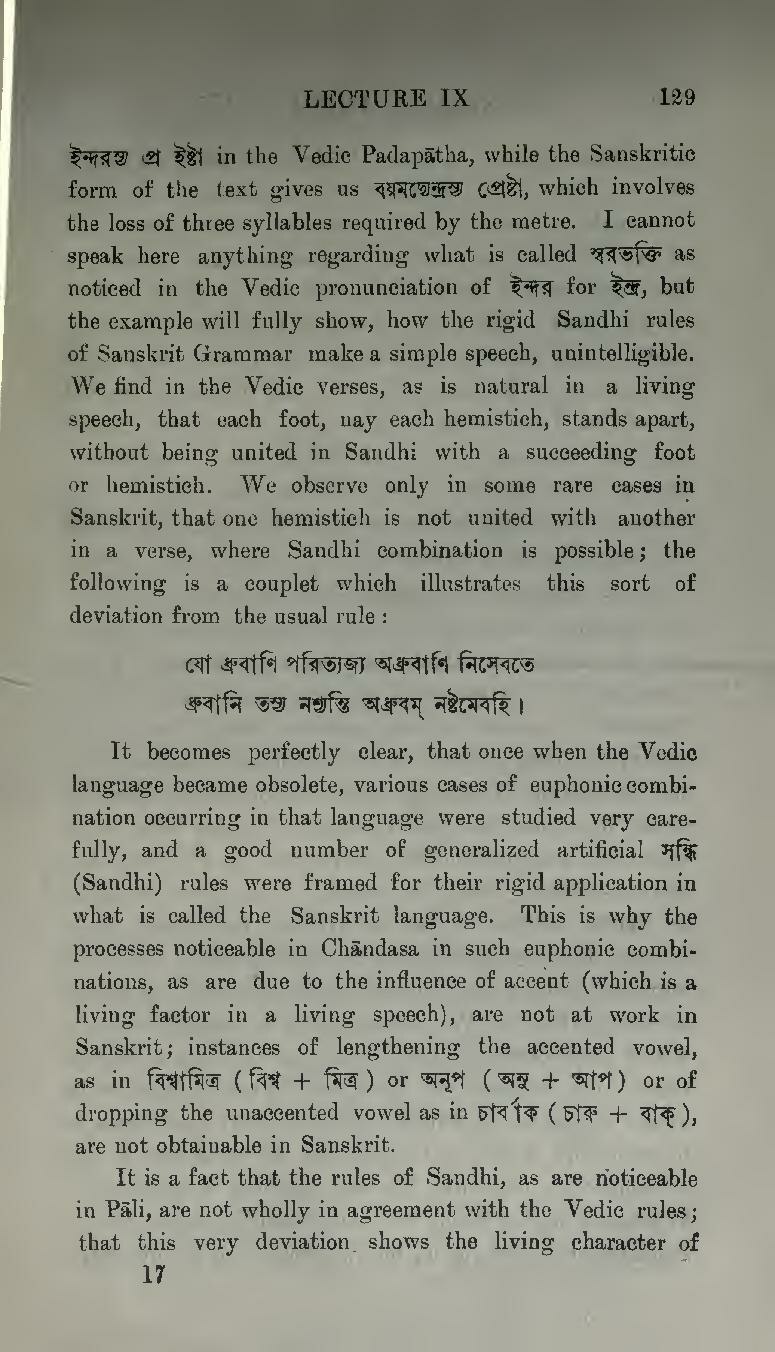ইন্দরস্য প্র ইষ্টা in the Vedic Padapātha, while the Sanskritic form of the text gives us বয়মদ্যেন্দ্রস্য প্রেষ্টা, which involves the loss of three syllables required by the metre. I cannot speak here anything regarding what is called স্বরভক্তি as noticed in the Vedic pronunciation of ইন্দর for ইন্দ্র, but the example will fully show, how the rigid Sandhi rules of Sanskrit Grammar make a simple speech, unintelligible. We find in the Vedic verses, as is natural in a living speech, that each foot, nay each hemistich, stands apart, without being united in Sandhi with a succeeding foot or hemistich. We observe only in some rare cases in Sanskrit, that one hemistich is not united with another in a verse, where Sandhi combination is possible; the following is a couplet which illustrates this sort of deviation from the usual rule:
যো ধ্রুবাণি পরিত্যজ্য অধ্রুবাণি নিসেবতে
ধ্রুবানি তস্য নশ্যন্তি অধ্রুবম্ নষ্টমেবহি।
It becomes perfectly clear, that once when the Vedic language became obsolete, various cases of euphonic combination occurring in that language were studied very carefully, and a good number of generalized artificial সন্ধি (Sandhi) rules were framed for their rigid application in what is called the Sanskrit language. This is why the processes noticeable in Chāndasa in such euphonic combinations, as are due to the influence of accent (which is a living factor in a living speech), are not at work in Sanskrit; instances of lengthening the accented vowel, as in বিশ্বামিত্র (বিশ্ব + মিত্র) or অনূপ (অনু + আপ) or of dropping the unaccented vowel as in চার্বাক (চারু + বাক্), are not obtainable in Sanskrit.
It is a fact that the rules of Sandhi, as are noticeable in Pāli, are not wholly in agreement with the Vedic rules; that this very deviation shows the living character of
